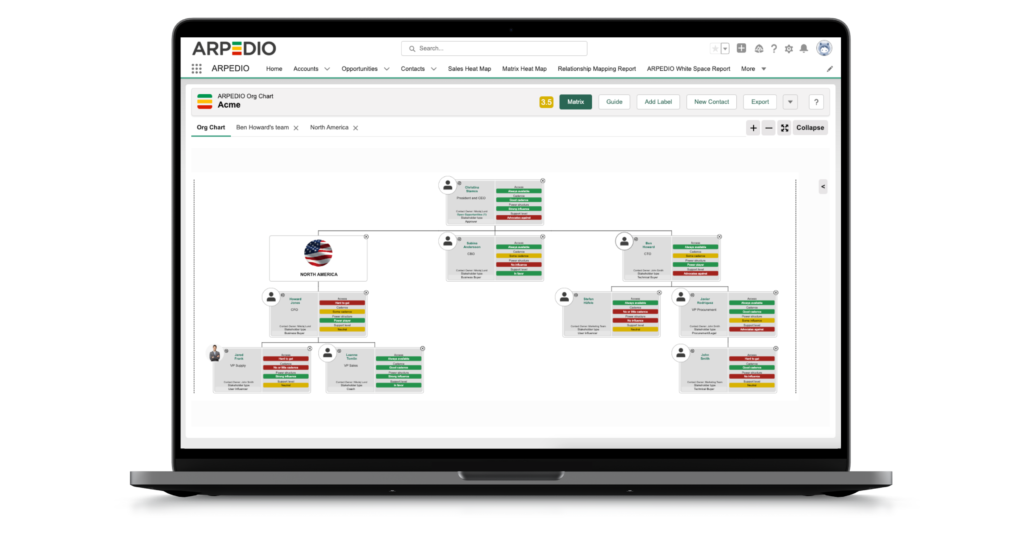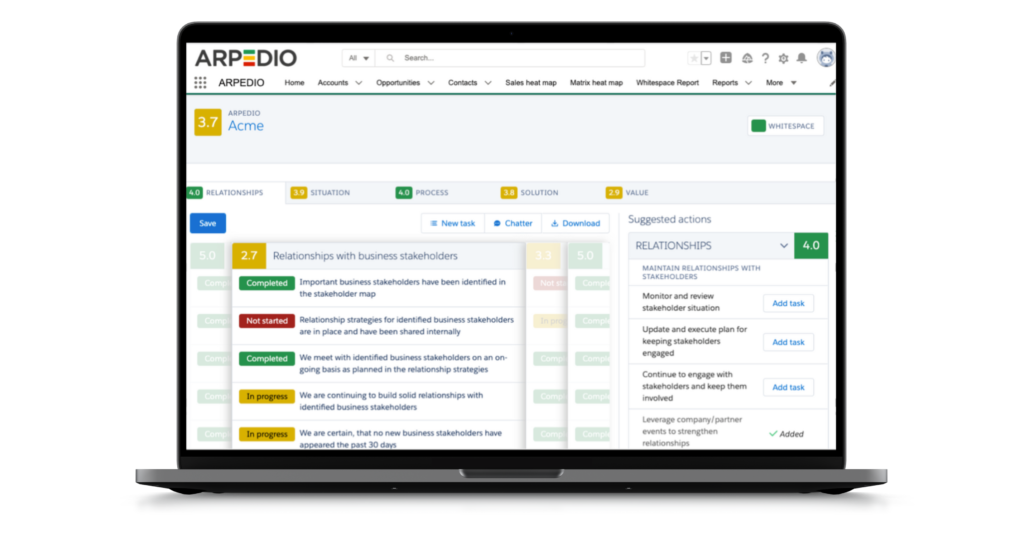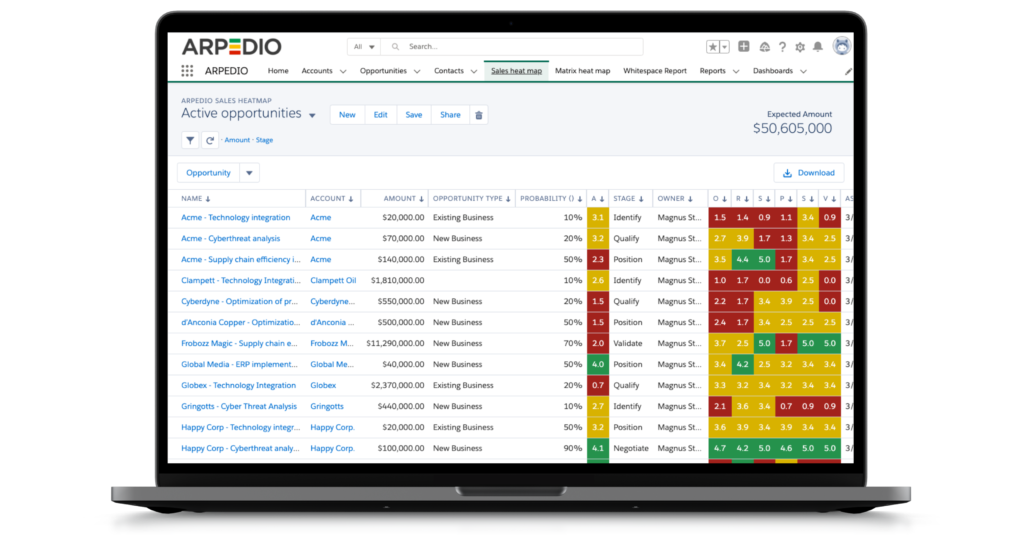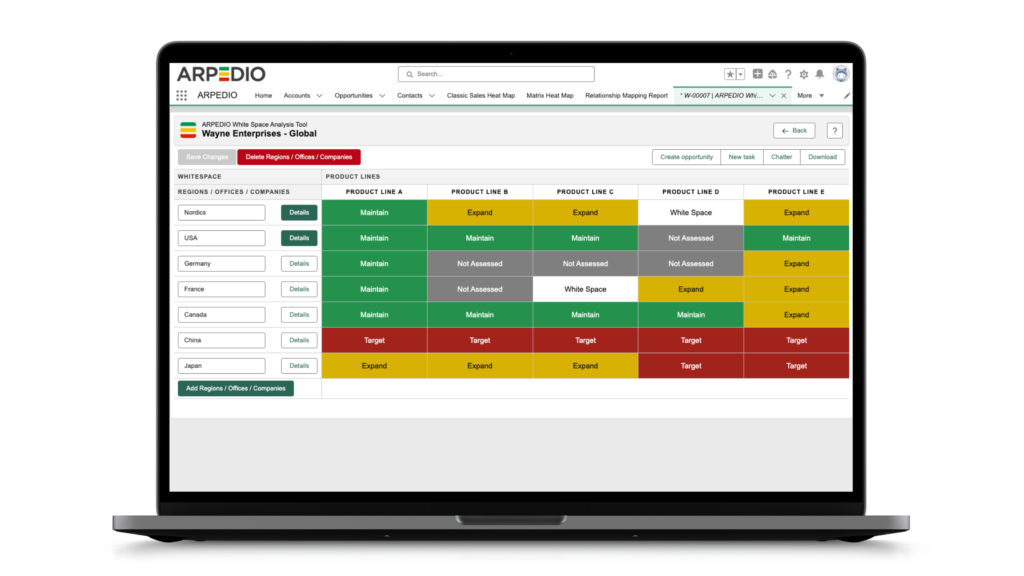As businesses strive to achieve growth and success, many overlook the untapped potential of effective stakeholder mapping. Understanding your stakeholders and their interests can be instrumental in unlocking new opportunities and driving business growth.
Stakeholder mapping is a process that involves identifying and analyzing stakeholders, mapping their relationships, and understanding their interests and influence. By gaining a comprehensive understanding of your stakeholders, you can develop more effective engagement strategies, minimize risk, and align business strategies with stakeholder interests.
In this article, we will explore the benefits of effective stakeholder mapping and the steps required to conduct a successful stakeholder mapping process. We will also highlight the tools and techniques available for stakeholder mapping.
Table of Contents
What is Stakeholder Mapping?
Stakeholder mapping is a crucial process that involves identifying and analyzing the stakeholders who have an impact on a business. It is a strategic tool used to understand the relationships between a business and its stakeholders.
Stakeholders can include a wide range of individuals, groups, or organizations, such as customers, suppliers, employees, shareholders, government agencies, and communities. Identifying and analyzing stakeholders can provide valuable insights into their interests, expectations, needs, and influence on the business.
The purpose of stakeholder mapping is to gain a comprehensive understanding of the stakeholders and their relationships to the business. This can help businesses develop effective strategies that cater to stakeholder needs and expectations while also taking into account their influence and power over the organization.
Stakeholder mapping involves a series of steps, including:
- Identifying stakeholders: This involves identifying all the individuals, groups, or organizations that have an impact on the business.
- Assessing stakeholder power and influence: This involves understanding the level of influence and power each stakeholder holds over the business.
- Assessing stakeholder interests: This involves analyzing the interests, expectations, and needs of each stakeholder.
- Mapping stakeholder relationships: This involves visualizing the relationships between the business and its stakeholders.
Overall, effective stakeholder mapping is an essential tool that can provide businesses with valuable insights into their stakeholders’ expectations, needs, and influence. By understanding these factors, businesses can develop more effective strategies that cater to stakeholder interests and contribute to their success.
Benefits of Stakeholder Mapping
Stakeholder mapping offers several benefits to businesses that can help in unlocking their potential. Here are some of the major benefits of stakeholder mapping:
- Identifying key influencers: Stakeholder mapping helps in identifying individuals or groups who have a strong influence on the business. This can be crucial in developing effective engagement strategies and achieving organizational goals.
- Managing risks: By identifying potential risks and concerns of stakeholders, businesses can take proactive measures to mitigate them.
- Enhancing decision-making: By mapping stakeholder interests and priorities, businesses can make more informed decisions that align with their stakeholders’ needs and expectations.
- Improving communication: Stakeholder mapping can help in developing targeted and effective communication strategies that cater to the needs and preferences of different stakeholders.
- Aligning business strategies with stakeholder interests: By gaining a better understanding of stakeholder needs and priorities, businesses can align their strategies and operations with their stakeholders’ interests, leading to greater success and sustainability.
Overall, stakeholder mapping can help businesses in achieving their goals, improving their reputation, and building a sustainable future. It’s a powerful tool that every business should consider using to unlock its untapped potential.
Tools and Techniques for Effective Stakeholder Mapping
Stakeholder mapping is an essential process that helps identify and analyze stakeholders and their relationships with a business. Effective stakeholder mapping involves using the right tools and techniques to gain a comprehensive understanding of stakeholders and their interests. Here are some tools and techniques that can help:
Stakeholder Influence Diagrams
A stakeholder influence diagram is a visual representation that helps identify the stakeholders who have the most influence on a business and their relationships with other stakeholders. This tool enables businesses to focus their attention on key stakeholders and develop effective engagement strategies.
Power-Interest Grids
A power-interest grid is a tool that helps businesses identify and classify stakeholders based on their level of power and interest in the company. This tool allows businesses to prioritize their stakeholders and allocate resources more effectively to meet their needs.
SWOT Analysis
SWOT analysis is a popular tool used to identify the strengths, weaknesses, opportunities, and threats facing a business. This tool can be used to analyze stakeholder relationships and identify areas where business strategies can be aligned with stakeholder interests.
Interviews and Surveys
Interviews and surveys are useful tools for gathering information about stakeholders and their interests. These tools help businesses understand stakeholder concerns and needs and develop effective engagement strategies based on their feedback.
Expert Panels
Expert panels bring together stakeholders and industry experts to discuss and analyze business issues and develop recommendations for action. This tool can help businesses gain valuable insights into stakeholder perspectives and develop effective engagement strategies.
By using these tools and techniques for stakeholder mapping, businesses can gain a comprehensive understanding of their stakeholders and their relationships with the company. This knowledge can help businesses develop effective engagement strategies, manage risks, and align their business strategies with stakeholder interests.
Integrating Stakeholder Mapping into Business Strategies
Stakeholder mapping is a powerful tool that can help businesses gain valuable insights into the needs, expectations, and behaviors of their stakeholders. By integrating stakeholder mapping into overall business strategies, organizations can create more effective and sustainable approaches to stakeholder engagement and management.
Stakeholder mapping can inform and shape organizational goals, improving customer satisfaction, fostering innovation, and driving long-term sustainability. By identifying key influencers, managing risk, and enhancing decision-making, stakeholder mapping can help businesses achieve their full potential.
Aligning Stakeholder Interests with Business Objectives
One of the key benefits of stakeholder mapping is its ability to align stakeholder interests with business objectives. By understanding stakeholders’ needs and expectations, organizations can tailor their products, services, and communication strategies to better meet stakeholder demands. This can lead to increased customer satisfaction, loyalty, and retention.
Incorporating Stakeholder Feedback into Decision-Making
Effective stakeholder mapping involves ongoing two-way communication and engagement, which can result in the collection of valuable feedback and insights. By incorporating stakeholder feedback into decision-making processes, organizations can ensure that their strategies and plans are relevant, viable, and effective. This can lead to improved outcomes and increased stakeholder buy-in.
Creating a Culture of Stakeholder Engagement
Stakeholder mapping can help businesses create a culture of stakeholder engagement by establishing clear channels of communication, encouraging dialogue and feedback, and fostering collaboration and partnership. By involving stakeholders in decision-making processes and making them feel valued and heard, organizations can build stronger relationships and improve overall stakeholder satisfaction.
In conclusion, integrating stakeholder mapping into business strategies can have a significant impact on organizational success. By aligning stakeholder interests with business objectives, incorporating stakeholder feedback into decision-making, and creating a culture of stakeholder engagement, businesses can position themselves for sustained growth and sustainability.
Stakeholder Mapping for Effective Stakeholder Engagement
Stakeholder mapping is not only a valuable tool for identifying and analyzing stakeholders, but also a means of fostering effective stakeholder engagement. By gaining a comprehensive understanding of stakeholders’ interests, power, and influence, organizations can tailor their communication and engagement strategies to align with stakeholder needs and expectations.
In order to achieve successful stakeholder engagement, organizations must take a proactive approach to stakeholder mapping and engagement. This includes:
- Identifying and prioritizing key stakeholders based on their level of interest and power,
- Analyzing stakeholder relationships and interests to understand potential points of conflict or alignment,
- Developing communication plans and engagement strategies that address stakeholder concerns and foster ongoing dialogue,
- Tracking progress and measuring the effectiveness of stakeholder engagement efforts on an ongoing basis.
By integrating stakeholder mapping into overall stakeholder engagement strategies, organizations can develop a more comprehensive understanding of stakeholder needs and expectations, foster positive relationships, and build trust and credibility over time.
| Benefits of Stakeholder Engagement | Key Metrics for Measuring Success |
| Enhanced reputation and credibility | Stakeholder satisfaction and feedback |
| Informed decision-making and risk management | Level of stakeholder participation and involvement |
| Improved innovation and collaboration | Impact of stakeholder engagement on business outcomes |
Measuring the success of stakeholder mapping and engagement efforts is essential for ongoing improvement and accountability. Key metrics for measuring success may include stakeholder satisfaction and feedback, level of stakeholder participation and involvement, and the impact of stakeholder engagement on business outcomes, such as revenue growth and customer loyalty.
In conclusion, effective stakeholder engagement is critical for achieving long-term business success, and stakeholder mapping is a valuable tool for informing stakeholder engagement strategies. By taking a proactive approach to stakeholder mapping and engagement, organizations can foster positive relationships, build trust and credibility, and achieve their business goals.
Measuring the Success of Stakeholder Mapping
Measuring the success of stakeholder mapping efforts is crucial to understand the impact of stakeholder engagement on business outcomes. Here are some key metrics and indicators that can help evaluate the effectiveness of stakeholder mapping:
Metric/Indicator | Description |
Stakeholder satisfaction | Assessing how satisfied stakeholders are with the organization’s actions and decisions. |
Stakeholder engagement | Measuring the level and quality of engagement activities with stakeholders, such as meetings, surveys, and feedback sessions. |
Issue resolution | Evaluating the effectiveness of resolving issues and conflicts that arise with stakeholders. |
Strategic alignment | Assessing how well the organization’s goals and strategies align with stakeholder interests and priorities. |
Business performance | Measuring the impact of stakeholder engagement and mapping efforts on business outcomes, such as revenue growth, profitability, and market share. |
Using these metrics, organizations can gain insights into the effectiveness of their stakeholder engagement and identify areas for improvement. By measuring the success of stakeholder mapping, businesses can demonstrate the value of their engagement efforts to stakeholders and drive long-term sustainability.
Stakeholder Mapping in Salesforce
Stakeholder mapping within Salesforce is a pivotal strategy for organizations aiming to cultivate and manage relationships effectively. Leveraging the capabilities of Salesforce, businesses can enhance their understanding of stakeholders and their connections, facilitating more informed decision-making and tailored engagement strategies.
Benefits of Stakeholder Mapping in Salesforce
Enhanced Relationship Visibility: By integrating stakeholder mapping tools into Salesforce, businesses gain comprehensive visibility into their stakeholder network. This enables them to identify key influencers, decision-makers, and relationships crucial for success.
Improved Collaboration: Stakeholder mapping in Salesforce promotes collaboration across teams by centralizing stakeholder data within the platform. This ensures that all relevant departments have access to up-to-date information, fostering coordinated efforts and streamlined communication.
Strategic Decision-Making: With detailed insights into stakeholder relationships and dynamics, organizations can make more strategic decisions aligned with stakeholder interests and objectives. This empowers businesses to prioritize initiatives, allocate resources effectively, and mitigate risks.
Personalized Engagement: Salesforce’s stakeholder mapping capabilities enable personalized engagement strategies tailored to individual stakeholders. By understanding stakeholders’ preferences, priorities, and concerns, businesses can deliver targeted communication and offerings, enhancing satisfaction and loyalty.
Tools for Stakeholder Mapping in Salesforce
ARPEDIO Relationship Mapping Software: ARPEDIO offers specialized relationship mapping software seamlessly integrated with Salesforce. This tool enables users to visualize stakeholder relationships, track interactions, and uncover opportunities for engagement directly within the Salesforce environment.
Guidance for Effective Stakeholder Mapping in Salesforce
Define Stakeholder Criteria: Establish clear criteria for identifying stakeholders within Salesforce, considering factors such as influence, interest, and relevance to organizational goals.
Regular Data Maintenance: Maintain the accuracy and integrity of stakeholder data within Salesforce through regular updates and validation processes. This ensures that stakeholders are correctly categorized and that relationship insights remain current.
Utilize Automation: Leverage automation features within Salesforce to streamline stakeholder mapping processes, such as data synchronization, activity tracking, and alerts for key events or changes in relationships.
Training and Adoption: Provide comprehensive training to Salesforce users on stakeholder mapping best practices and the use of related tools. Encourage adoption by highlighting the value of stakeholder insights in driving business outcomes.
By embracing stakeholder mapping in Salesforce, organizations can optimize their relationship management efforts, foster stakeholder engagement, and ultimately achieve their business objectives more effectively.
Conclusion
In conclusion, effective stakeholder mapping is a crucial aspect of business growth, success, and sustainability. By identifying and analyzing stakeholders, their interests, and their influence on the business, organizations can unlock untapped potential and capitalize on new opportunities. Stakeholder mapping also helps in managing risks, enhancing decision-making, and improving communication, ultimately leading to better business outcomes.
Integrating stakeholder mapping into overall business strategies can help in shaping organizational goals, improving customer satisfaction, fostering innovation, and driving long-term sustainability. It also serves as a valuable tool for stakeholder engagement, informing effective communication plans, relationship-building initiatives, and collaborative decision-making processes.
Overall, stakeholder mapping is a valuable tool that can help organizations unlock untapped potential, drive business success, and build long-term sustainability. By leveraging the insights gained through effective stakeholder engagement and management, organizations can navigate complex business environments and emerge as leaders in their fields.










